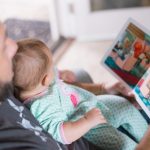Creativity is the freest form of self-expression. There is nothing more satisfying and fulfilling for children than to be able to express themselves openly and without judgment. The ability to be creative, to create something from personal feelings and experiences, can reflect and nurture children’s emotional health.
Children’s creativity, does not manifest itself is the same ways as adults. In early years the creative functioning of a child is based on process orientation which means making and doing, rather than finishing. A child’s development through creation nurtures their confidence to explore and the try out new things. Creativity can be found in music, storytelling, poems, as well as the painting, drawing or sketching. Being creative is also about going beyond the information and materials that are presented to us and making something new with what is around us.
To enhance a child’s creativity, try creating things together at regular sessions. This offers opportune learning and bonding experience with your child. It also allows us time to slow down and sit with each other working on practical activities with our hands. When we make art together with our children we can add additional relational benefits, as they share their feelings and idea’s in the process of making.
So where to begin! Set out a safe and comfortable space to get creative with your child. The best creative activities are those which invite children to play and explore without set outcomes. Let them take the lead and explore and create using different textures and materials. Your role is to create the right conditions for them to create freely. Younger children can get involved by making blobs on paper laid out on the ground, there are also edible paint idea’s and recipes that can be easily sourced online.
Always praise the creation that your child has produced. Trial and error are all part of the experience and there is no “wrong” route in creativity. It is about going along at the child’s pace to discover and blend things together as they see most suitable to their own thought process. As a parent it is important to respect all of your children’s works of creation and all of their attempts at doing it. It is not about the end result, it is about the effort they put in, however little that might be.
Allow for messy play and creating together. This is vital for true experimental enjoyment. If getting messy is a bit of a bother for you to overcome, put an old oil table cloth or newspaper on top of your table before you begin creating. Poster paints are great for younger children to get started with as they wash off skin or clothes easily. Acrylics are best suited to 7yrs or older as they are harder to wash off and more expensive to buy.
For younger age groups, stamping and stencilling is great fun. You can create a stamp by cutting a potato in half and then cutting a shape such as a star or triangle into the flesh side of each half. Then blot the potato into a tray of paint and stamp onto the paper. You can also use sponges for stamping. Cut different shapes out of a sponge and then the children can use it to blot and stamp in the same way as a potato. Children can mix paints on a sheet of baking paper and then place the sheet, paint side down onto another sheet of paper to create a very colourful stamp.
Outdoor walls can be a fantastic canvas for creative art particularly if you have an unpainted one at the back of your house. Use jumbo coloured chalk to create a real life size jungle or ocean bed! Alternatively, children can be provided with a basin of water and placing their hands in the water creates hand stamps on the concrete wall. It allows for endless fun and your creation soon disappears if it is a dry sunny day.
Kids love to lie on the ground to colour and draw. Use a large roll of low quality paper and roll out a couple of meters. Old rolls of wallpaper work well. Give the children different sized plates to draw circles all over the paper. Then give them the challenge of making the circles into things, anything!
Try Pixel Art! Pull the centre pages from a sum copy and Google any of your favourite things as pixel art. Copy your chosen picture onto the sum copy pages. Remember creativity is also found in writing a story or poem and making music, a tin whistle is an inexpensive musical instrument that can be bought locally.
Handy Materials to have at home:
- Jumbo chalks: great for outdoor walls art.
- Poster Paints/Acrylic paints
- Brushes
- large roll of low-quality paper from stationary suppliers, usually measures 10m x 1m or rolls of old wall paper
- toilet and kitchen roll inserts
- cereal box cardboard
- sponges
Happy Creativity Everyone!




